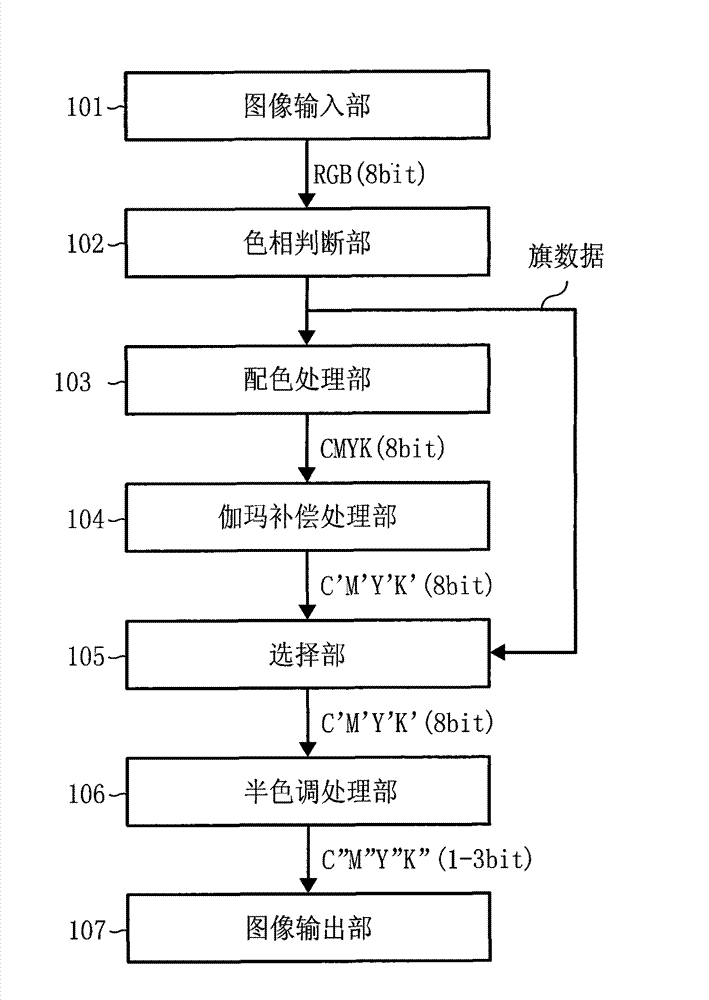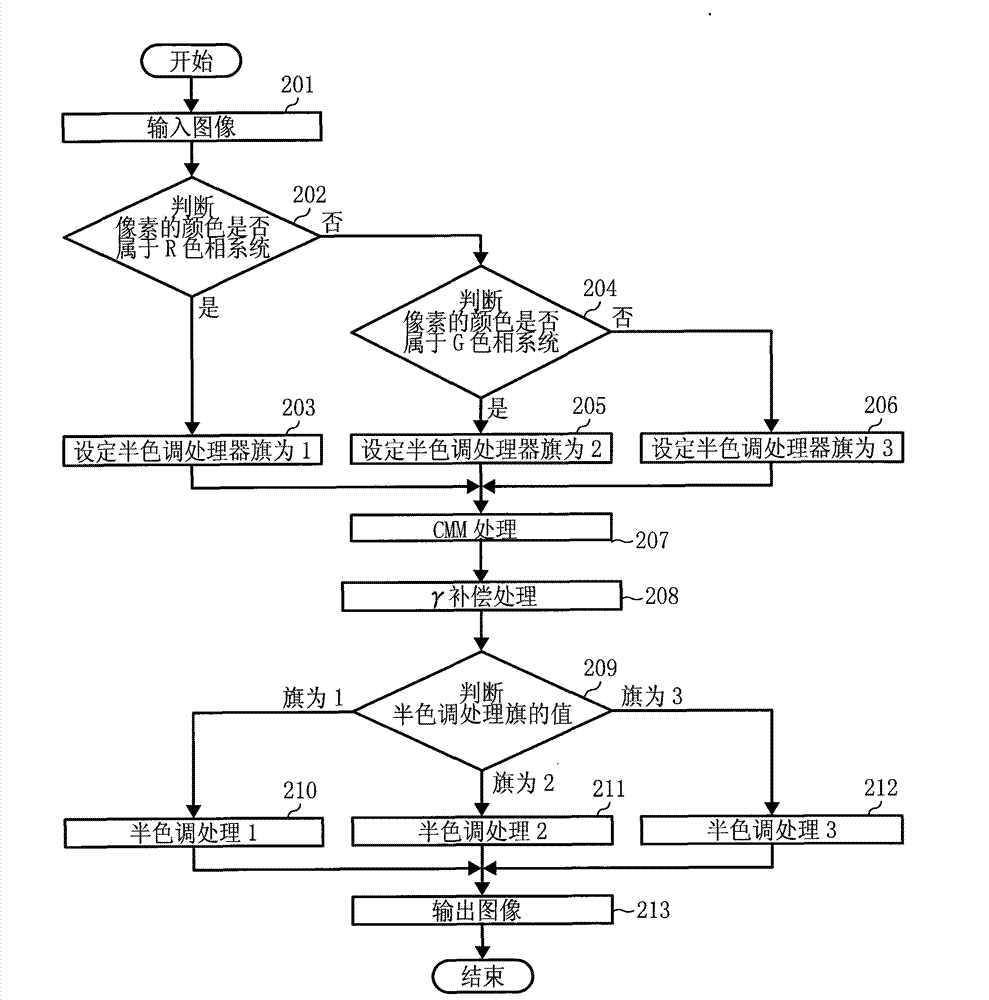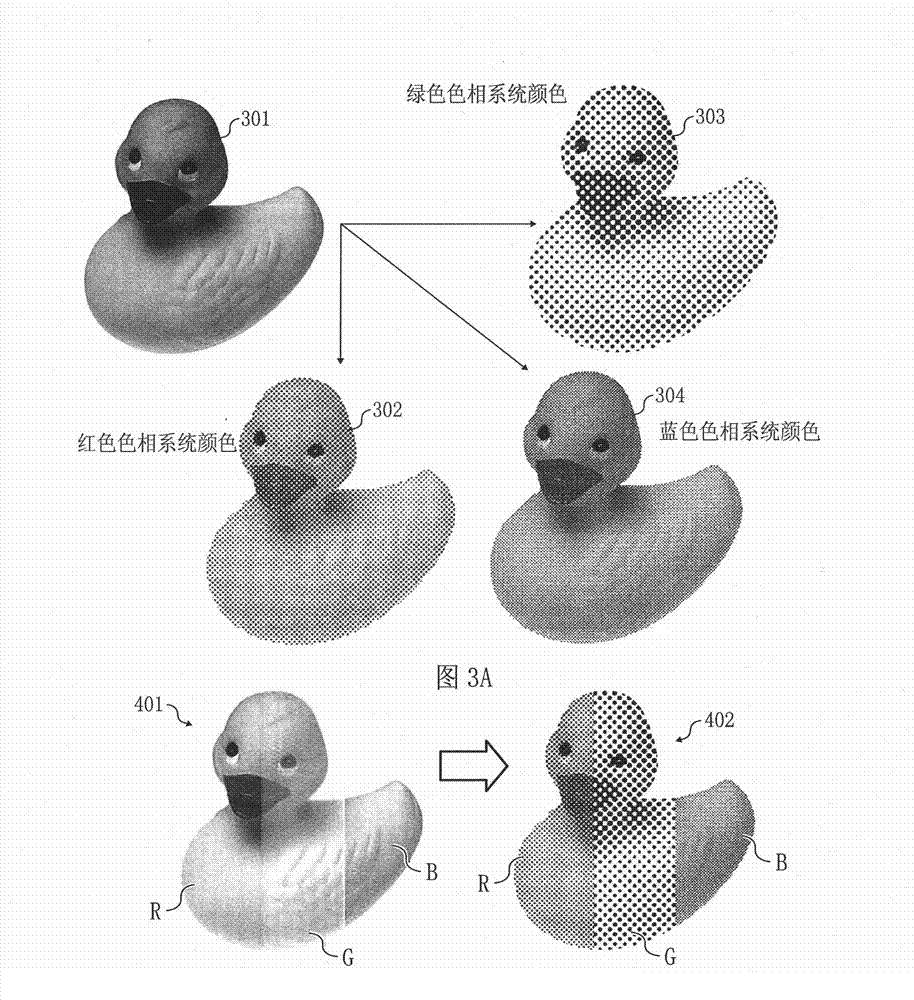Image processing device and image processing method
An image processing device and image processing technology, which are applied in the field of image processing, can solve problems such as restrictions on freedom of expression, and achieve the effect of reducing the feeling of images
- Summary
- Abstract
- Description
- Claims
- Application Information
AI Technical Summary
Problems solved by technology
Method used
Image
Examples
Embodiment 1
[0021] Human color vision refers to color recognition based on stimuli from L cone cytochromes (red response), M cone cytochromes (green response), and S cone cytochromes (blue response). The above-mentioned cone cytochromes of patients with abnormal color vision are out of balance or lose their function, so patients with abnormal color vision have weaker ability to recognize colors than healthy people. In other words, whether the color vision is abnormal depends on whether the input color can be recognized as the color of the red system, the color of the green system, or the color of the blue system.
[0022] figure 1 The structure of the embodiment of the present invention is shown. figure 1 Among them, 101 denotes an image input unit, which is used to acquire images from equipment such as a personal computer or a multifunctional multifunction machine, 102 denotes a hue judgment unit, which is used to judge the hue of image data of an input image, and 103 denotes a color ...
Embodiment 2
[0034] The halftone processing of Embodiment 1 uses an AM dither signal (dither processing), but the present invention is not limited thereto. In addition, an FM dither signal or error diffusion processing may be used as halftone processing. In this case, as in the first embodiment, the resolution of the dithering process or the conversion of the error diffusion process is performed based on the determined hue region.
[0035] Embodiment 2 performs dither processing or error diffusion processing on the input image data, but it is also possible to apply different halftone processing to one image data at the same time. Specifically, the use of FM dithering signals and error diffusion processing are similar in processing results, so it is allowed to use these two processing at the same time. However, AM dither signals and FM dither signals, and between AM dither signals and error diffusion processing are different in processing type, so they are not allowed to be used at the same...
Embodiment 3
[0038] As described above, the present invention expresses different colors by changing the screen ruling or resolution of the halftone process in each hue. Therefore, in parts where the mesh angle or dot pattern is different, the grayscales such as grayscale patterns are continuous. Sexuality is affected, and the resulting unexpected stereoscopic vision effect will make it impossible for patients with abnormal color vision to distinguish color differences.
[0039] In contrast, in Example 3, the mesh angles in the respective hue regions are made the same, and the halftone dot patterns are based on the same tone (same tendency). Figure 4A It is an example in which the mesh angle (mesh dithering processing) is different, Figure 4B This is an example in which halftone dot patterns are different.
[0040] The above-mentioned embodiment does not imply a uniform output color, that is, mesh angles in each version of CMYK. For example, red is represented by M and Y, and green is ...
PUM
 Login to View More
Login to View More Abstract
Description
Claims
Application Information
 Login to View More
Login to View More - R&D
- Intellectual Property
- Life Sciences
- Materials
- Tech Scout
- Unparalleled Data Quality
- Higher Quality Content
- 60% Fewer Hallucinations
Browse by: Latest US Patents, China's latest patents, Technical Efficacy Thesaurus, Application Domain, Technology Topic, Popular Technical Reports.
© 2025 PatSnap. All rights reserved.Legal|Privacy policy|Modern Slavery Act Transparency Statement|Sitemap|About US| Contact US: help@patsnap.com



